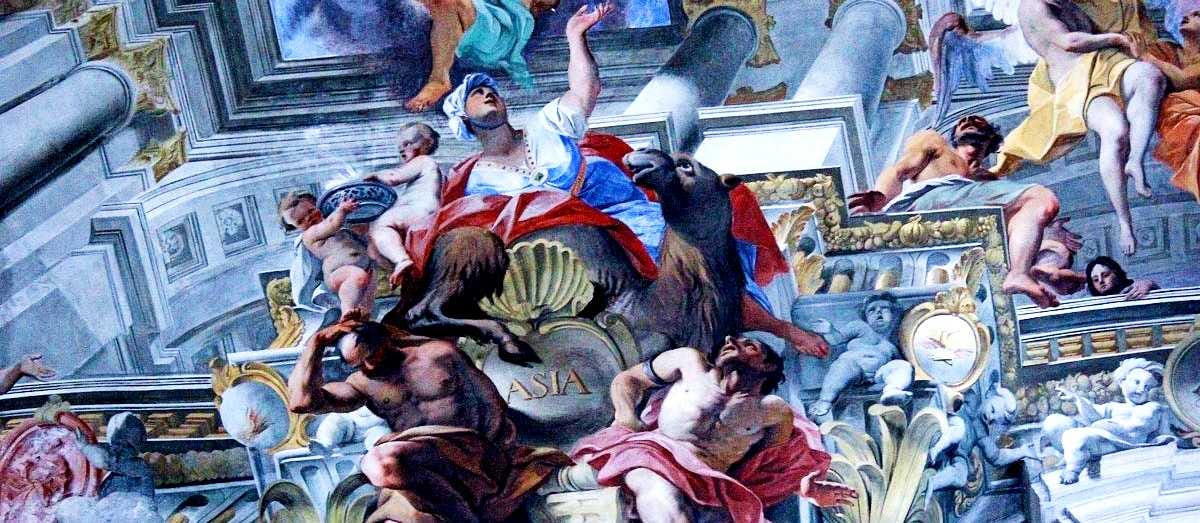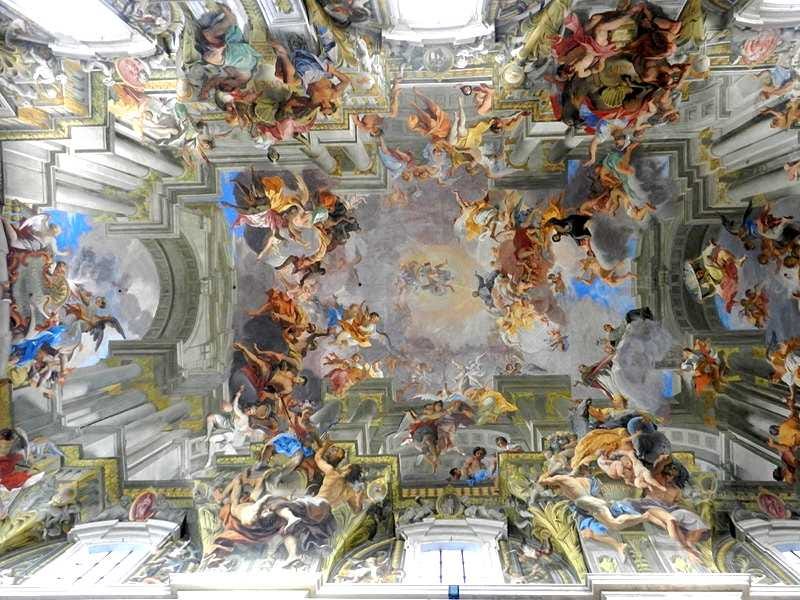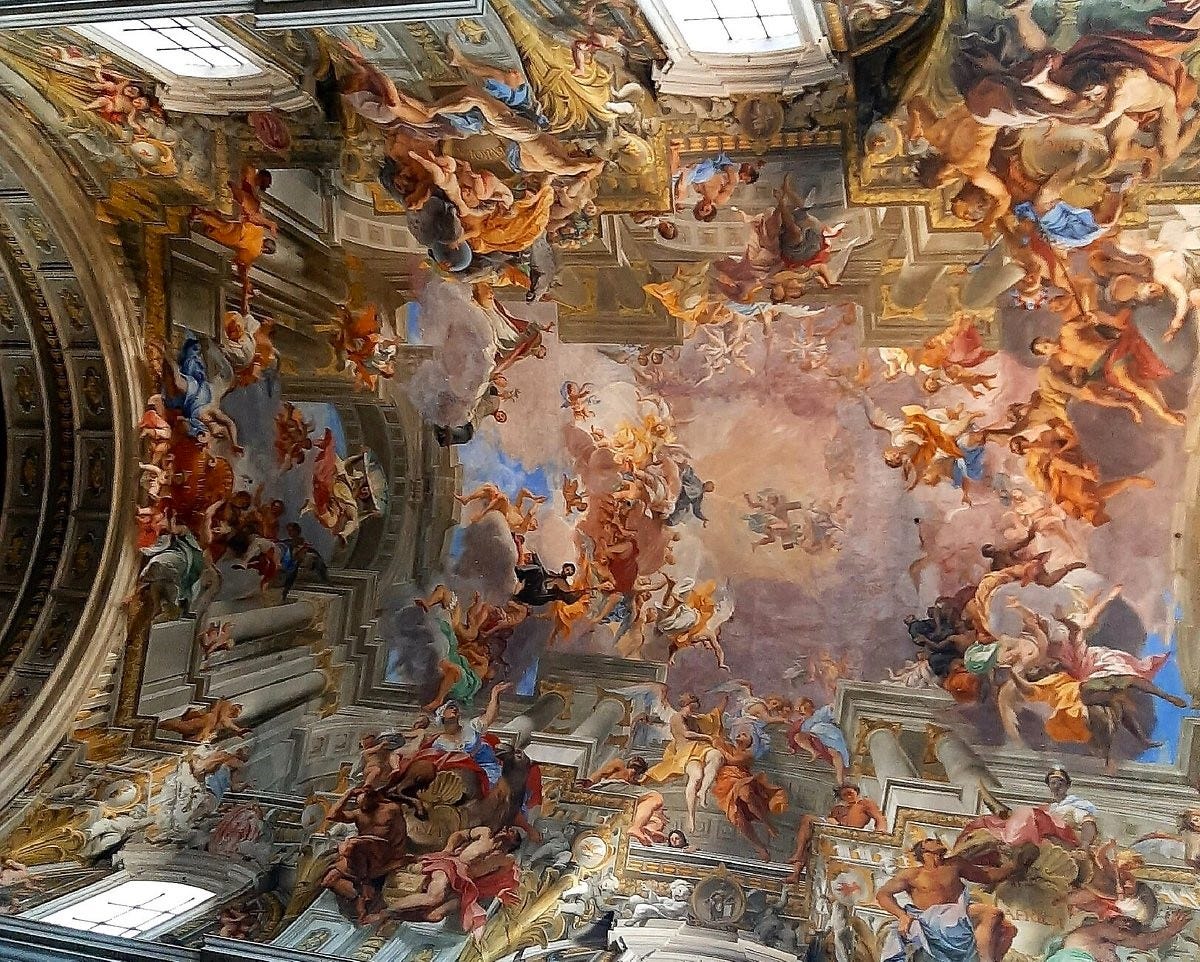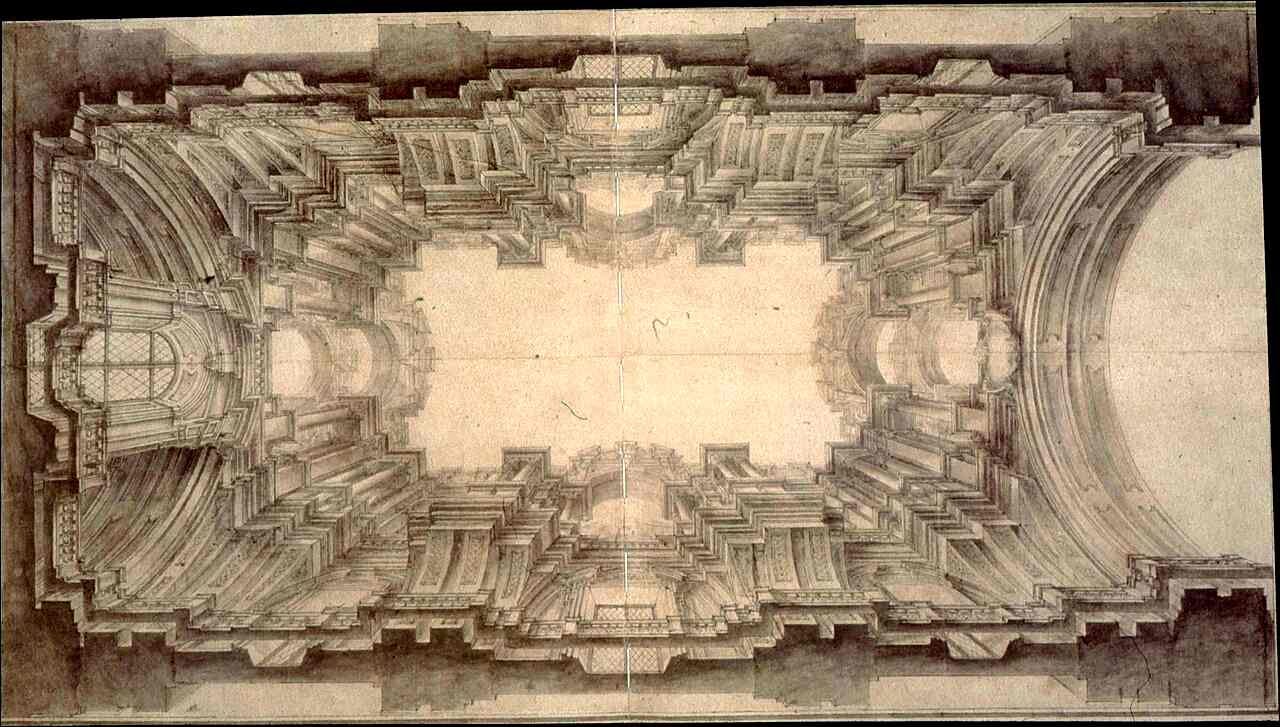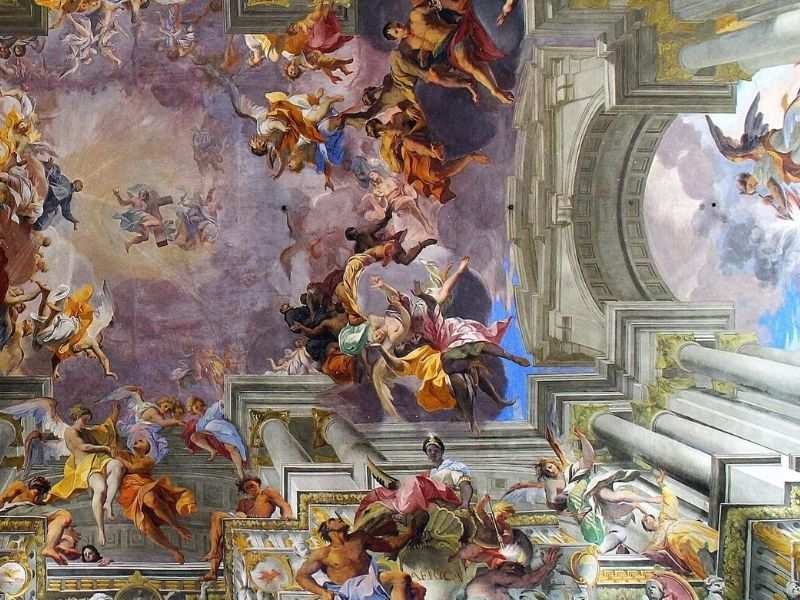A Sacred Ceiling That Seems to Pierce Heaven
Saint Ignatius of Loyola (1491-1556 AD) was long dead by the time the Jesuits began to build a church in his name in Rome (ca. 1650), but Ignatius would surely have been proud of the man who painted the ceiling of his church.
The Jesuit lay brother’s name was Andrea Pozzo (1642-1709), and there is a story behind that ceiling.
Pozzo was called in to pinch hit when the dome project for the church stalled. Apparently, the church’s structure wasn’t well suited for a dome, and there were fights between architects and contractors about how to accomplish it, not to mention how to pay for it.
So, Pozzo was just supposed to paint something on the celling while his superiors could figure out what to do about the dome.
Then the lay brother executed such an astonishing masterpiece that the Jesuits abandoned the idea of a dome altogether because he came up with a much better plan: he gave them a view right into Heaven itself!
As you will see from this picture, the ceiling is actually a sort of optical illusion that makes you think you are looking straight into the sky. The ceiling is a rounded barrel vault, which gives some illusion of depth (or height in this case).
Even with that, the painting seems to drive much farther upward than that and to pierce Heaven itself! (Here are two views)
Admittedly, it’s hard to appreciate such a vast work of art in such a small format as a computer screen but a few quick facts will help:
The central aisle (nave) of the church stretches 82 feet, most of which is filled with Pozzo’s work.
The painting is actually an immense fresco (wet paint on plaster) – the same medium Michelangelo used to paint the Sistine Chapel over 100 years earlier.
A depiction of St. Ignatius’ entry into heavenly glory lies at the very center of the dome, but it seems drowned out by all the activity around it! The figure of saints and angels literally float into heaven.
The painting seems to stretch beyond the ceiling and spills onto the archways and walls giving the whole thing a sort of 3-D effect.
Pozzo inserted a circle of marble into the floor of the church where the viewer could stand and look up to see the maximum effect of the illusion.
To give you an idea of how the artist planned this masterpiece before he even put the first dab of paint on it, here is his drawing which laid out the framework of the massive work of art. (Needless to say, the drawing is on a flat piece of paper.)
We’ll finish with a fascinating detail of the ceiling for you to appreciate the genius of a humble but talented lay brother of the 17th century.
—
Photo Credits: Feature (image); Full ceiling (Geobia via Wikimedia); Pozzo’s drawing (Henry A. Millon, Public domain, via Wikimedia); Detail (Trip Advisor).





